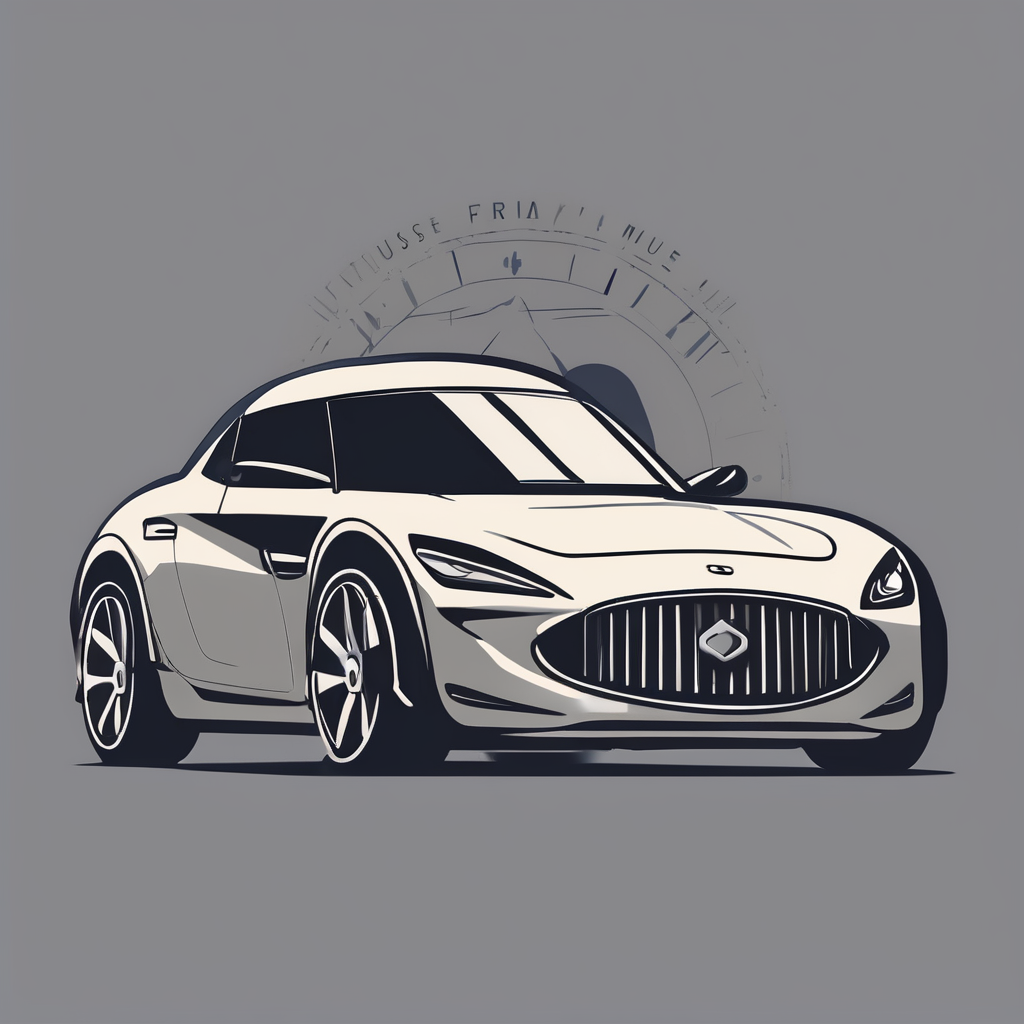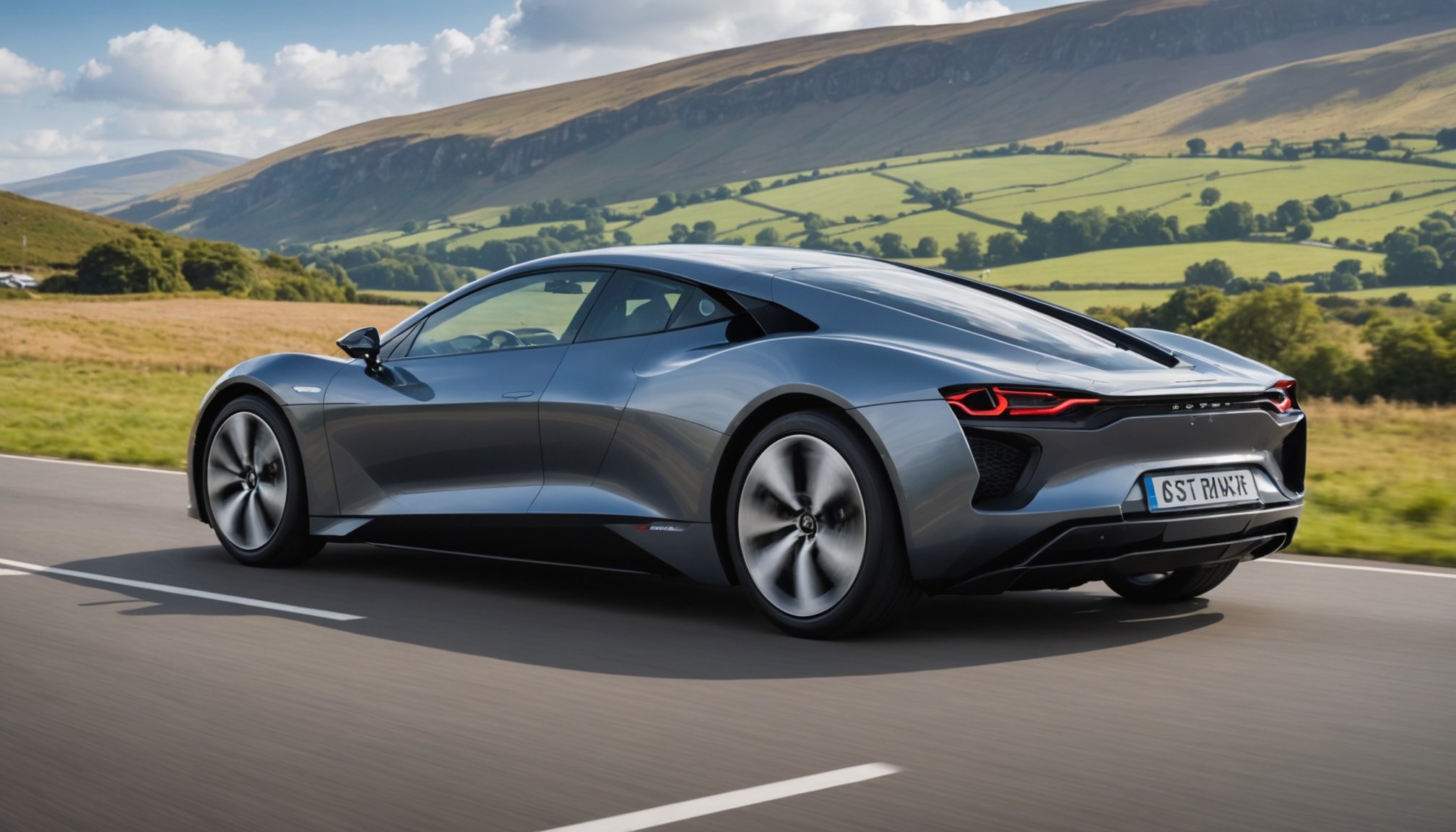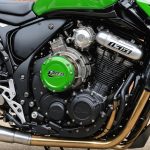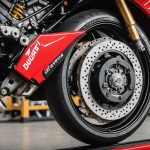Understanding Aerodynamics and Its Impact on EV Range
Aerodynamics plays a pivotal role in determining the electric vehicle range as it directly influences energy consumption. In essence, aerodynamics is concerned with how air flows around a moving vehicle. For electric vehicles (EVs), enhanced aerodynamic efficiency translates to reduced air resistance, allowing the vehicle to travel further on the same battery charge.
To comprehend the importance for electric vehicles, one must first grasp how aerodynamics affects range. As an EV travels, it encounters air resistance, which is a significant factor in energy consumption, particularly at higher speeds. Overcoming this resistance requires energy, thereby draining the battery more quickly. By improving aerodynamic efficiency, manufacturers can lower the drag coefficient, which is a measure of how streamlined a vehicle is.
Topic to read : Revamp Your Classic British Car: A Step-by-Step Guide to Adding a Modern Digital Dashboard
Key aerodynamic principles essential to vehicle design include shape, surface smoothness, and reduced frontal area. Aerodynamic efficiency is enhanced when designers focus on aerodynamics—for instance, by crafting sleek, low-profile body shapes and integrating underbody panels. These design elements direct airflow smoothly over the vehicle, reducing drag.
Thus, by prioritising aerodynamics, manufacturers can significantly extend an electric vehicle’s range, offering a more sustainable and efficient mode of transport.
Also to discover : Step-by-Step Guide to Installing a Remote Start System in Your British Hybrid Car
Current Aerodynamic Challenges for British Electric Vehicles
British electric vehicles currently face aerodynamic challenges due to common design flaws. Many existing models display issues like increased drag, often attributed to obstructive mirrors and grills that were repurposed from traditional vehicles. Such inefficiencies lead to reduced range and performance, which can discourage consumer acceptance. Aerodynamics plays a significant role in determining how efficiently a vehicle moves, especially as electric motors amplify even minor discrepancies in resistance.
Moreover, regulatory and market challenges significantly impact how British manufacturers approach EV design issues. With stringent emissions targets and competition from international markets, local brands must innovate rapidly. However, the existing regulatory landscape can sometimes stifle creativity, forcing manufacturers to prioritize compliance over aerodynamic advancements. Simultaneously, consumer expectations demand design appeal and practicality, further complicating matters.
The effect of these aerodynamic design issues on vehicle performance is notable. Poorly optimized aerodynamics often results in increased battery consumption, necessitating larger battery packs, which in turn increase the vehicle’s weight. This cycle affects overall efficiency, leading to higher operational costs and demanding more frequent charging. Consequently, addressing these aerodynamic challenges is pivotal for improving both performance and market appeal of British electric vehicles. By revolutionizing design, manufacturers can better meet regulatory demands and consumer expectations.
Proven Strategies for Enhancing Aerodynamics
When it comes to aerodynamic modifications, electric vehicle owners can significantly improve efficiency by optimising their vehicle’s shape and structure.
Streamlined Body Shapes
A well-designed body shape is crucial for enhancing EV efficiency strategies. Opting for a streamlined body reduces the drag force acting against the vehicle. This efficiency is usually achieved by designing smooth and curved surfaces that allow the air to flow seamlessly across the vehicle’s exterior. By reducing turbulence, the vehicle faces less resistance, improving both speed and battery life.
Underbody and Wheel Fairings
Covering the underbody is one of the key design enhancements for better aerodynamic performance. This includes the use of underbody trays and wheel fairings, which minimise the air resistance created by the rough surfaces of a vehicle’s underside and open wheel wells. Implementing these features can drastically reduce drag and improve overall efficiency.
Use of Active Aerodynamic Elements
Active aerodynamic elements offer dynamic solutions for real-time airflow adjustments. These elements, such as adaptive spoilers or shutters, can change their position based on speed and driving conditions to optimise aerodynamic modifications. The ability to adapt and respond to different scenarios ensures that the vehicle maintains optimal performance, further cementing the significance of incorporating active elements for maximised EV efficiency strategies.
Case Studies of Successful Aerodynamic Implementations
In the realm of electric vehicles (EVs), the United Kingdom stands out with its strategic aerodynamic designs, resulting in successful implementations. British EVs like the Jaguar I-PACE exemplify how a focus on streamlined shapes enhances energy efficiency. By minimizing drag, these vehicles increase driving range—a crucial factor for consumers navigating long journeys. The smooth contours of the I-PACE illustrate an optimal balance between aesthetics and functionality, making it a prime candidate in EV design examples.
Drawing lessons from international competitors further enriches the British approach. German engineers, renowned for their precision, meticulously integrate active aerodynamics in models like the Audi e-tron. This involves retractable spoilers and adaptive air suspension systems that respond to driving conditions. Such innovations demonstrate the effectiveness of marrying traditional engineering with modern technology in real-world applications.
Ultimately, the key to successful implementations lies in custom solutions tailored for different environments. Strategies like using lightweight materials and enhancing underbody flow not only reduce drag but also cater to specific market demands. These pragmatic adaptations underline the importance of being perceptive to evolving automotive landscapes, ensuring that vehicles not only surpass efficiency benchmarks but also remain attractive to consumers.
Expert Opinions on Future Aerodynamic Innovations
Industry experts are abuzz with predictions regarding the future aerodynamic trends within the evolving automotive landscape. There’s a clear consensus that advances in EV technology are fundamentally reshaping traditional aerodynamic standards. As electric vehicles increasingly dominate the market, the demand for efficient designs becomes imperative. Engineers and designers are prioritising streamlined forms that reduce air resistance, ultimately improving vehicles’ range and performance.
A multitude of emerging technologies is also instrumental in driving these aerodynamic shifts. Innovations such as active aerodynamics, where components adjust in real-time to optimise airflow, are gaining traction. Materials science plays a key role as well, with cutting-edge composites enabling lighter and more agile vehicular structures.
Central to these developments is the robust emphasis on research and development. Dedicated R&D efforts are pivotal in realising the potential of these aerodynamic advancements. By investing in simulation technologies, experiments in wind tunnels, and computational fluid dynamics (CFD), researchers are breaking new ground in EV technology advancements.
Experts agree that the convergence of aerodynamic improvements with electric vehicle technology marks a transformative era in automotive design. By harnessing these innovations, the industry is poised to deliver vehicles that are not only sustainable but also superior in performance and efficiency.
Steps for British EV Makers to Optimize Aerodynamics
In the realm of British EV manufacturers, optimizing aerodynamics is crucial for enhancing vehicle performance and efficiency. The journey begins with practical tips on design optimization. For instance, integrating smoother shapes minimizes air resistance, a fundamental aerodynamic principle. This means prioritising sleekness can significantly improve speed and battery life.
The success of these efforts often lies in collaboration opportunities. By working closely with researchers, manufacturers can harness cutting-edge insights into aerodynamics, making adjustments grounded in scientific data. This collaborative approach fosters innovation, leading to models that are both aesthetically pleasing and highly efficient.
However, balancing aesthetics and aerodynamics poses a challenge. Strategic recommendations suggest that a harmonious blend of beauty and practicality can be achieved through thoughtful compromises. Emphasising features like underbody trays and active aero-elements ensures that vehicles are both striking and functionally superior.
To support British EV manufacturers in implementing these strategies, industry recommendations focus on:
- Regularly updating design protocols to incorporate the latest aerodynamic advancements.
- Investing in simulation technology to forecast airflow effects during the early stages of design.
- Cultivating a design culture that equally values form and function, paving the way for models that lead in both style and efficiency.
By adhering to these steps, British EV makers can excel in a competitive market, producing vehicles that are both efficient and attractive.
Measuring the Impact of Aerodynamics on Performance
Understanding the impact measurement of aerodynamic design is crucial in enhancing a vehicle’s performance. Aerodynamic testing tools such as wind tunnels and computational fluid dynamics (CFD) allow engineers to simulate airflow and assess efficiency. These methods not only identify drag reduction opportunities but also highlight potential design optimizations.
The performance assessment of aerodynamics is vital for increasing a vehicle’s range and efficiency. Improved aerodynamics can lead to decreased energy consumption, resulting in extended travel distances for vehicles, especially in electric models. By minimizing air resistance, vehicles conserve energy, making them more efficient and eco-friendly.
There are numerous case studies where aerodynamic adjustments have led to substantial performance gains. For instance, in automotive racing, small modifications to a car’s aerodynamics can result in significant time improvements, showcasing the power of precision design. Similarly, commercial vehicles benefit from enhanced aerodynamic testing, leading to reduced operational costs and better fuel economy.
Better aerodynamics is not just about speed but also about sustainable and efficient performance. Understanding and leveraging these insights through thorough testing methods can lead to tangible improvements in a vehicle’s operational capabilities.











